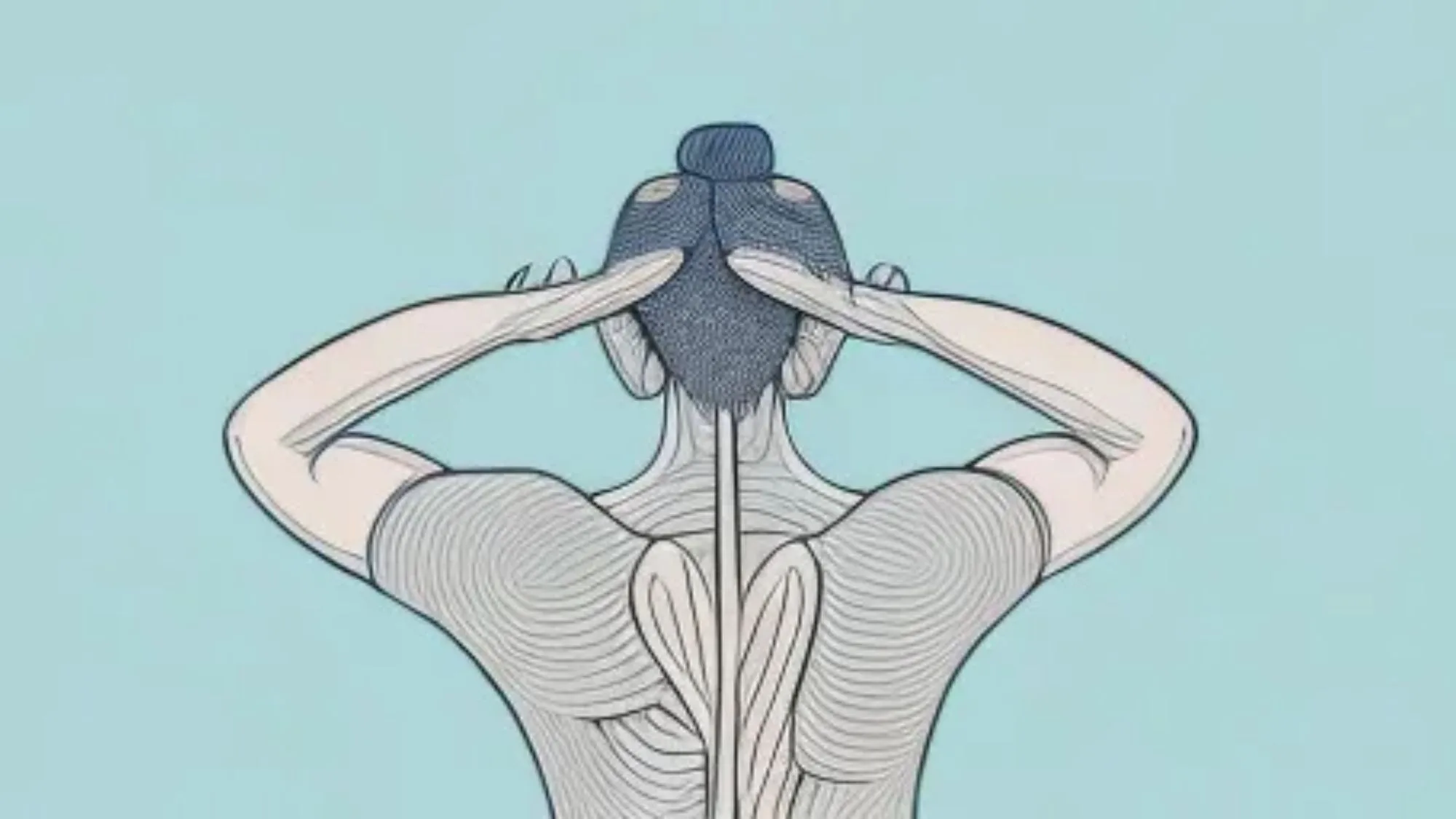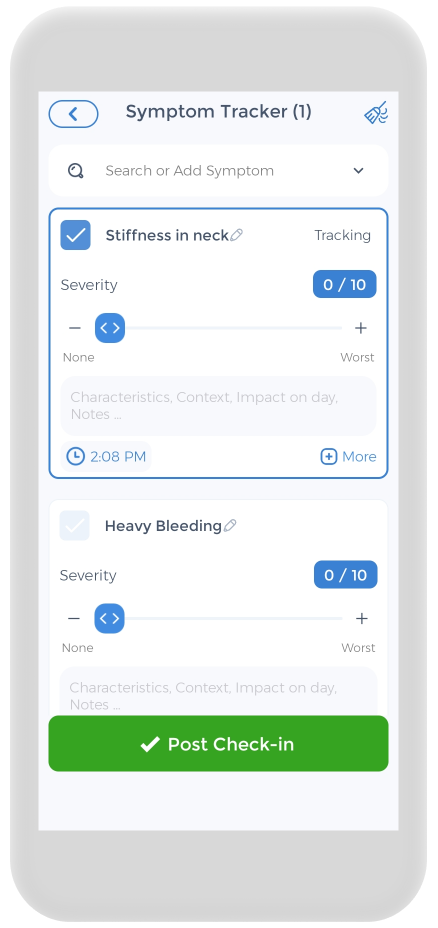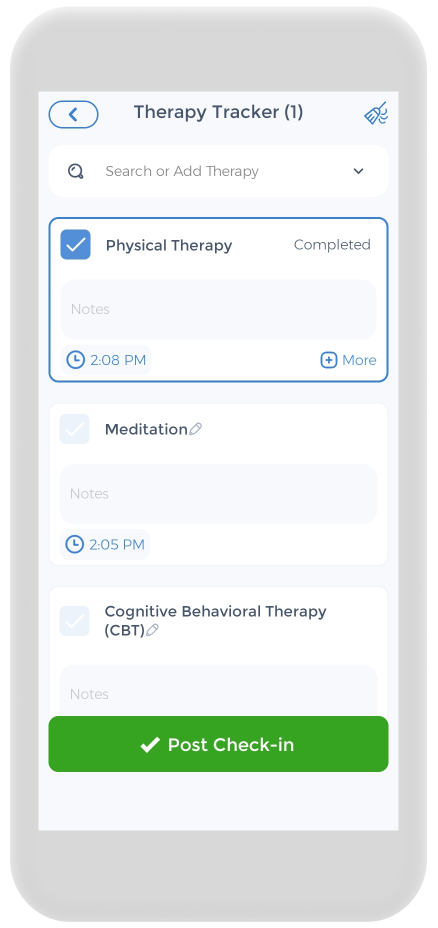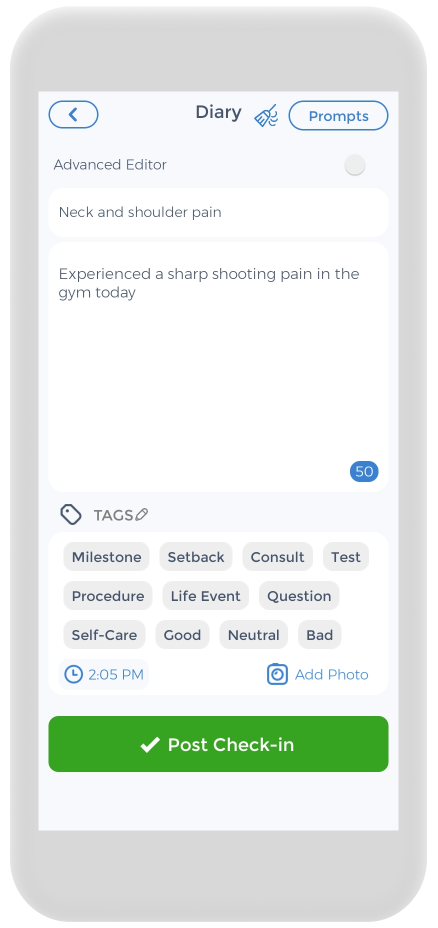
Neck pain is a common complaint that can be caused by a variety of factors. It is important to understand the causes and symptoms of neck pain in order to effectively manage and alleviate it. In this article, we will explore effective strategies for neck pain relief, including understanding neck pain, maintaining proper posture, utilizing physical therapy techniques, considering medication, exploring alternative therapies, making lifestyle changes, and knowing when to seek professional help.[1]
Understanding Neck Pain: Causes and Symptoms
Neck pain can be caused by a number of factors, including muscle strain, poor posture, trauma, and certain medical conditions [1]. It is important to recognize the common causes of neck pain in order to address them appropriately. Some common causes include:
certain medical conditions [1]. It is important to recognize the common causes of neck pain in order to address them appropriately. Some common causes include:
One of the most common causes of neck pain is muscle strain or tension. This can occur due to overuse of the neck muscles, such as from repetitive movements or poor posture. When the muscles in the neck become strained, it can lead to pain and discomfort from stiff muscles.
Another cause of neck pain is whiplash, which is often the result of a sudden jerking motion of the head and neck. This can happen during a car accident or a sports-related neck injury. Whiplash can cause significant pain and stiffness in the neck, making it difficult to move.
Arthritis is also a common cause of neck pain. This condition involves inflammation of the joints in the neck, which can lead to pain, stiff neck, and limited range of motion. Arthritis can develop as a result of aging, wear and tear on the joints, or as a result of an autoimmune condition.
Herniated or bulging discs in the neck can also contribute to neck pain. When the discs between the vertebrae in the neck become damaged or displaced, they can put pressure on the surrounding nerves, leading to pain, numbness, and tingling in the neck, shoulders, and arms.
Poor ergonomics, such as sitting at a desk with improper posture or using a poorly designed pillow, can also contribute to neck pain. When the neck is not properly supported or aligned, it can lead to muscle strain and discomfort.
Recognizing the Symptoms of Neck Pain
In addition to understanding the causes of neck pain, it is important to recognize the symptoms. Common symptoms of neck pain include:
One of the most obvious symptoms of neck pain is pain or discomfort in the neck itself, including neck stiffness, tight neck muscles, or neck tension. This can range from a mild ache to a sharp, stabbing pain. The intensity and location of the pain can vary depending on the underlying cause.
Stiffness or difficulty moving the neck is another common symptom of neck pain. When the muscles and joints in the neck are inflamed or injured, it can make it challenging to turn the head from side to side or tilt it up and down.
Headaches can also be a symptom of neck pain or stiffness. The muscles and nerves in the neck are closely connected to those in the head, so when there is tension or inflammation in the neck, it can cause headaches to occur.
Shoulder or arm pain is another symptom that can be associated with neck pain. When the nerves in the neck are compressed or irritated, it can cause pain to radiate down the shoulder and arm, sometimes even into the hands and fingers.
Numbness or tingling in the hands or fingers can also be a symptom of neck pain. This occurs when the nerves in the neck are affected, leading to a loss of sensation or abnormal sensations in the extremities.
By understanding the causes and symptoms of neck pain, individuals can begin to explore effective strategies for relief. Whether it be through physical therapy, medication, lifestyle changes, or a combination of approaches, addressing the underlying cause of neck pain is crucial for long-term relief and improved quality of life.[2]
The Importance of Proper Posture
Poor posture is a major contributor to neck pain. When the head is constantly tilted forward or the shoulders are hunched, it places strain on the muscles and vertebrae of the neck. This strain can lead to muscle imbalances, increased stress on the neck structures, and ultimately result in discomfort and pain. Improving and maintaining good posture can significantly relieve neck pain and discomfort, allowing individuals to go about their daily activities with ease and comfort.
One of the ways poor posture contributes to neck pain is through the forward head posture, which is often seen with prolonged smartphone and computer use. When we spend hours hunched over our devices, our head is positioned forward, causing the neck to bend unnaturally. This forward head posture places excessive strain on the muscles, ligaments, and joints of the neck and spinal cord, leading to muscle imbalances and increased stress on the neck structures.
To maintain good posture and prevent neck pain, there are several tips that individuals can follow:
Tips for Maintaining Good Posture
- Keep your head aligned with your spine: When sitting or standing, make sure your head is aligned with your spine. Avoid tilting your head forward or backward, as this can strain the neck muscles.
- Sit up straight with shoulders relaxed: When sitting, keep your back straight and your shoulders relaxed. Avoid slouching or hunching forward, as this can put unnecessary strain on the neck and upper back.
- Use a supportive chair and ergonomic workstation: Invest in a chair that provides proper support for your back and neck. Additionally, set up your workstation in an ergonomic manner, ensuring that your computer screen is at eye level and your keyboard and mouse are at a comfortable height.
- Take breaks and stretch regularly: If you have a sedentary job or spend long hours sitting, it’s important to take regular breaks to stretch and move around. This helps relieve tension in the neck and promotes blood circulation.
- Engage in exercises that promote good posture: There are specific exercises that can help strengthen the muscles that support good posture. These exercises focus on the neck, shoulders, and upper back, helping to improve muscle strength and flexibility.
By making conscious efforts to improve and maintain proper posture, individuals can decrease neck stiffness quickly experience relief from neck pain. Incorporating these tips into daily routines can lead to long-term benefits, not only in terms of reducing neck pain but also in promoting overall musculoskeletal health. Remember, good posture is not only about looking confident and poised, but it is also essential for maintaining a healthy and pain-free neck.[3][4][5][6]
Physical Therapy Techniques for Neck Pain
Physical therapy is a valuable tool for managing neck pain. It involves a variety of techniques aimed at reducing pain, improving mobility, and strengthening the neck muscles. Two key physical therapy techniques for neck pain relief are stretching exercises and strengthening exercises.
Neck pain is a common complaint that can be caused by various factors such as poor posture, muscle strain, or injury. Physical therapy techniques can provide effective relief and help individuals regain their quality of life. Through a combination of targeted exercises and therapeutic interventions, physical therapists can address the underlying causes of neck pain and promote healing.
Stretching Exercises for Neck Pain Relief
Stretching exercises can help alleviate muscle tension and improve flexibility in the neck. Neck stretches, such as chin tucks, shoulder rolls, and side bends, can be performed to target specific areas of discomfort.
Chin tucks are a simple yet effective exercise for relieving neck pain. To perform this exercise, sit or stand with your spine straight and shoulders relaxed. Gently tuck your chin in towards your chest, feeling a stretch in the back of your neck. Hold this position for 15-30 seconds, then release. Repeat the exercise 5-10 times, gradually increasing the duration of each stretch.
Side bends are another beneficial stretching exercise for neck pain relief. Stand with your feet shoulder-width apart and arms relaxed at your sides. Slowly tilt your head towards one shoulder, feeling a stretch on the opposite side of your neck. Hold the stretch for 15-30 seconds, then return to the starting position. Repeat on the other side. Perform 5-10 repetitions on each side, gradually increasing the duration of each stretch.
Strengthening Exercises to Prevent Neck Pain
Strengthening neck exercises help to improve the stability and function of the neck muscles. These neck pain exercises, which may include neck extensions and shoulder blade squeezes, can help loosen neck muscles and prevent future episodes of neck pain.Engaging in healthy weight exercising regularly can help promote proper blood flow, strengthen weak muscles, loosen tightened muscles, and help you practice good posture.
Neck extensions are a beneficial strengthening exercise for the neck muscles. Start by sitting or standing with your spine straight and shoulders relaxed. Slowly tilt your head back, looking up towards the ceiling. Hold this position for 5-10 seconds, then return to the starting position. Repeat the exercise 5-10 times, gradually increasing the duration of each hold.
Shoulder blade squeezes are another effective exercise for strengthening the neck muscles. Begin by sitting or standing with your spine straight and shoulders relaxed. Squeeze your shoulder blades together, feeling a contraction in the upper back muscles. Hold this position for 5-10 seconds, then release. Repeat the exercise 5-10 times, gradually increasing the duration of each hold.
Physical Therapy
 Physical therapy techniques can be particularly beneficial for individuals with chronic neck pain or those recovering from an injury. It is important to consult with a healthcare professional or physical therapist to determine the most appropriate exercises and techniques for individual needs.
Physical therapy techniques can be particularly beneficial for individuals with chronic neck pain or those recovering from an injury. It is important to consult with a healthcare professional or physical therapist to determine the most appropriate exercises and techniques for individual needs.
In addition to stretching and strengthening exercises, physical therapists may employ other techniques such as manual therapy, heat or even hot and cold therapy, and electrical stimulation to further enhance the effectiveness of treatment. Manual therapy involves hands-on techniques to mobilize joints and soft tissues, helping to reduce pain and improve range of motion. Heat or cold therapy can provide soothing relief and reduce inflammation as heat relaxes stiff muscles and promotes blood flow while ice reduces inflammation. Electrical stimulation uses low-level electrical currents to stimulate the muscles and promote healing.
Furthermore, physical therapists may also provide education on proper posture and body mechanics to prevent future episodes of neck pain. They can teach individuals how to maintain good posture during daily activities and provide tips on ergonomic adjustments in the workplace or home environment.[7][8][9][10][11][12]
The Role of Medication in Neck Pain Management
Medication is often used as part of a comprehensive treatment plan for neck pain relief. Depending on the severity and underlying cause of the pain, different medications may be recommended. Over-the-counter medications and prescription medications each serve a specific purpose.
Neck pain can be a debilitating condition that affects individuals of all ages and backgrounds. It can stem from various causes, such as muscle strain, poor posture, or underlying medical conditions. When it comes to managing neck pain, medication can play a crucial role in providing relief and improving quality of life.
Over-the-Counter Medications for Neck Pain
Over-the-counter pain relievers, such as acetaminophen or non-steroidal anti-inflammatory drugs (NSAIDs) like ibuprofen, can provide temporary relief from mild to moderate neck pain. These medications can help reduce inflammation and alleviate discomfort. They are readily available at local pharmacies and can be purchased without a prescription.
Acetaminophen, commonly known as Tylenol, is a popular choice for individuals experiencing neck pain. It works by blocking pain signals to the brain, providing temporary relief. However, it is important to follow the recommended dosage and avoid exceeding the maximum daily limit to prevent liver damage.
NSAIDs, such as ibuprofen and naproxen, not only reduce muscle pain but also help decrease inflammation. Inflammation is a common cause of neck pain, especially when it is associated with conditions like arthritis or muscle sprains. These medications can be taken orally or applied topically in the form of creams or gels.
Prescription Medications: When are they Necessary?
In cases of severe or chronic neck pain, prescription medications may be necessary to decrease discomfort [2]. Muscle relaxants, prescription-strength pain relievers, and anti-inflammatory drugs can be prescribed by a healthcare professional to provide more significant relief. It is important to consult with a healthcare provider to determine the appropriate medication and dosage.
Muscle relaxants, such as cyclobenzaprine or methocarbamol, are often prescribed to alleviate muscle spasms and tension in the neck. These medications work by blocking pain signals and reducing muscle contractions, promoting relaxation and pain relief.
Prescription-strength pain relievers, such as opioids, may be considered in cases of severe neck pain that does not respond to other treatments. However, due to the potential for dependence and abuse, these medications are typically used as a last resort and closely monitored by healthcare professionals.
Anti-inflammatory drugs, such as corticosteroids, can be prescribed to reduce inflammation and swelling in the neck. These medications are often administered through injections directly into the affected area, providing targeted relief.
While medication can provide relief, it is not the only solution for managing neck pain. It is important to explore other strategies in conjunction with medication to achieve optimal results. Physical therapy, exercise, stretching, and heat or cold therapy are often recommended as complementary treatments to medication. Additionally, maintaining good posture, using ergonomic equipment, and avoiding activities that exacerbate the pain can help prevent future episodes of neck pain.
Overall, medication can be a valuable tool in the management of neck pain. Whether it is over-the-counter or prescription medication, the key is to work closely with a healthcare provider to determine the most appropriate treatment plan for individual needs. By combining medication with other strategies, individuals can find relief and regain control over their lives.
Alternative Therapies for Neck Pain Relief
In addition to traditional treatments, individuals may find relief from neck pain through alternative therapies. Two common alternative therapies for neck pain relief are acupuncture and chiropractic treatments.
Acupuncture and Neck Pain
Acupuncture involves the insertion of thin needles into specific points on the body to stimulate healing and relieve pain. It has been found to be effective in reducing neck pain and improving overall well-being.
Acupuncture has been practiced for thousands of years and is a key component of traditional Chinese medicine. The belief behind acupuncture is that the body has a flow of energy, known as Qi, that can become blocked or imbalanced, leading to pain and illness. By inserting needles into specific points along the body’s meridians, acupuncturists aim to restore the flow of Qi and promote healing.
During an acupuncture session for neck pain, the acupuncturist will carefully select the points to target based on the individual’s symptoms and diagnosis. The needles used are extremely thin and typically cause minimal discomfort. Many people find acupuncture to be a relaxing and rejuvenating experience to decrease neck pain, with some even reporting a sense of euphoria or deep relaxation during the treatment.
Research has shown that acupuncture can be an effective treatment for neck pain, both in the short-term and long-term. It can help reduce inflammation, improve blood circulation, and release endorphins, which are the body’s natural painkillers. In addition to relieving pain, acupuncture can also address underlying issues that may contribute to neck pain, such as muscle tension, stress, or poor posture.
Chiropractic Treatments for Neck Pain
Chiropractic treatments focus on the manipulation of the spine to alleviate pain and improve mobility. Chiropractors believe that misalignments in the spine, known as subluxations, can interfere with the body’s ability to function properly and lead to pain and discomfort.
Chiropractors believe that misalignments in the spine, known as subluxations, can interfere with the body’s ability to function properly and lead to pain and discomfort.
During a chiropractic treatment for neck pain, the chiropractor will perform manual adjustments to the cervical spine itself, using controlled and precise force to realign the vertebrae. These adjustments can help restore proper spinal alignment, relieve pressure on a pinched nerve, loosen tight neck muscles, and reduce inflammation in the surrounding tissues.
Chiropractic treatments for neck pain may also involve other techniques, such as soft tissue therapy, gentle neck massage, stretching exercises, and lifestyle modifications. Chiropractors take a holistic approach to patient care, considering factors like posture, ergonomics, and overall health when developing a treatment plan to ease neck pain.
It is important to consult with a licensed and experienced acupuncturist or chiropractor to ensure safe and effective treatment to ease neck pain. Alternative therapies can provide complementary relief to traditional treatments for neck pain management.
While acupuncture and chiropractic treatments have shown promising results for neck pain relief, it is essential to remember that every individual is unique, and what works for one person may not work for another. It is advisable to consult with a healthcare professional to determine the most appropriate treatment approach for your specific condition.[13][14][15][16]
Lifestyle Changes to Alleviate Neck Pain
Lifestyle changes can play a significant role in managing and alleviating neck pain. Two important lifestyle factors to consider are diet and exercise, as well as stress management.
The Impact of Diet and Exercise on Neck Pain
A healthy diet and regular exercise can contribute to overall well-being, which in turn can help reduce neck pain. A well-balanced diet rich in nutrients and antioxidants can support the healing process, while exercise can improve strength, flexibility, and posture.
Stress Management and Neck Pain
Stress and tension can exacerbate neck pain. Engaging in stress management techniques, such as deep breathing exercises, meditation, or yoga, can help reduce stress levels and alleviate neck pain.
By making positive lifestyle changes, individuals can support their neck health and reduce the frequency and intensity of neck pain episodes.[17][18][19]
When to Seek Professional Help for Neck Pain
While self-care strategies can often provide relief for neck pain, there are instances when professional help should be sought. It is important to be aware of the signs that indicate the need for medical attention and to choose the right healthcare professional for neck pain management.
Signs Your Neck Pain Needs Medical Attention
If any of the following signs accompany neck pain, it is important to seek medical attention:
- Severe pain or sudden onset of pain
- Numbness, weakness, or tingling in the arms or legs
- Difficulty swallowing or breathing
- Loss of control of bladder or bowel
Using the CareClinic App to Manage Pain
Having a pain diary is crucial for your health, and the CareClinic app can help with that. You can use the app as your health and clinical journal. Just go to the pain diary section of the app and enter your daily symptoms, medications, and other triggers, as they occur. There are also specific sections on the app to track each of these. This can help you be aware of early warning signs. Whether you suffer from chronic low back pain, chronic tension headache, impaired physical and mental functioning, chronic headaches, chronic widespread pain, chronic musculoskeletal pain, chronic neck pain, or depressive and anxiety disorders, the app is here to help you improve your chronic pain-related health.
The app also has a medication section where you can precisely track the pain therapies you are undergoing, whether it be superficial heat, spinal manipulation, relaxation therapy, or transcutaneous electrical nerve stimulation. Hopefully, having all this information handy will help you with treating chronic pain conditions.
Sources:
- https://www.ninds.nih.gov/health-information/disorders/pain
- https://painbc.ca/health-professionals/education/OT-workshop
References
- “Neck pain – Diagnosis and treatment – Mayo Clinic”. https://www.akamai.mayoclinic.org/diseases-conditions/neck-pain/diagnosis-treatment/drc-20375587
- “Neck Pain: 6 Common Causes and Treatments”. https://my.clevelandclinic.org/health/symptoms/21179-neck-pain
- “3 tips to prevent neck pain – Harvard Health”. https://www.health.harvard.edu/pain/3-tips-to-prevent-neck-pain
- “Protecting Your Neck: Posture and Body Mechanics”. https://patienteducation.nationwidechildrens.org/RelatedItems/3%2C40037
- “Tips for Neck Pain Prevention | Aurora Health Care”. https://www.aurorahealthcare.org/services/aurora-spine-services/neck-pain/prevention
- “Sit at a desk all day? Try these 6 exercises to regain your posture”. https://www.tomsguide.com/wellness/fitness/sit-at-a-desk-all-day-these-are-the-6-best-exercises-you-can-do-to-improve-your-posture
- “Neck Strengthening Exercises | Spine-health”. https://www.spine-health.com/conditions/neck-pain/neck-strengthening-exercises
- “How to Relieve Neck Pain With Physical Therapy | BenchMark Physical Therapy”. https://www.benchmarkpt.com/blog/how-to-relieve-neck-pain-with-physical-therapy/
- “Get Better Posture With 5 Easy Moves”. https://time.com/2830660/stretches-improve-posture/
- “Best Physical Therapy Techniques for Neck Pain | Rock Valley”. https://www.rockvalleypt.com/physical-therapy-techniques-for-neck-pain/
- “How Does Physical Therapy Help Resolve Neck and Back Pain?”. https://idcchealth.org/blogs/how-does-physical-therapy-help-resolve-neck-and-back-pain/
- “Guide | Physical Therapy Guide to Neck Pain | Choose PT”. https://www.choosept.com/guide/physical-therapy-guide-neck-pain
- “The effectiveness of acupuncture in the management of persistent regional myofascial head and neck pain: A systematic review and meta-analysis – PubMed”. https://pubmed.ncbi.nlm.nih.gov/32147064/
- “Acupuncture for neck disorders – PubMed”. https://pubmed.ncbi.nlm.nih.gov/27145001/
- “Are Chiropractors Legitimate?”. https://time.com/4282617/chiropractor-lower-back-pain/
- “Acupuncture Actually Works for Neck Pain, Study Says”. https://time.com/4097083/acupuncture-neck-pain/
- “Role of Nutrition and Exercise in Managing Cervical Stenosis | Symptoms, Treatment and Prognosis”. https://cervicalstenosis.org/role-of-nutrition-and-exercise-in-managing-cervical-stenosis
- “Lifestyle Changes for Neck Pain Relief | Illinois Back Institute”. https://illinoisbackpain.com/lifestyle-changes-for-neck-pain-relief/
- “Tips for Maintaining Healthy Neck Muscles | Illinois Back Institute”. https://illinoisbackpain.com/preventive-measures-and-tips-for-maintaining-healthy-neck-muscles/
- “When to seek immediate medical attention for neck pain – Harvard Health”. https://www.health.harvard.edu/pain/when-to-seek-immediate-medical-attention-for-neck-pain
- “Electronic diaries for monitoring chronic pain: 1-year validation study – PubMed”. https://pubmed.ncbi.nlm.nih.gov/11275385/


